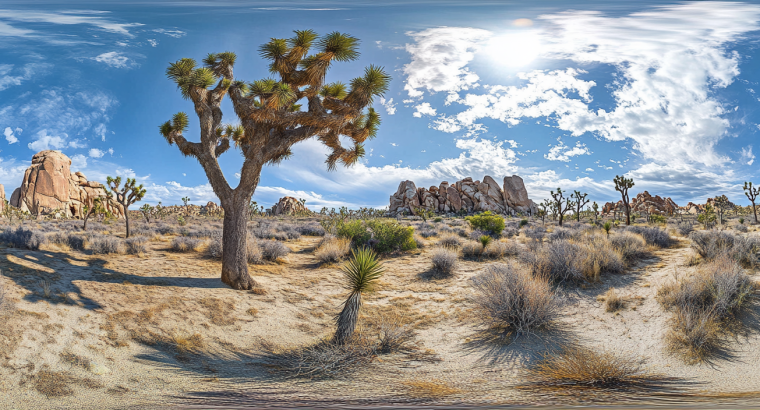Joshua Tree National Park – 조슈아 트리 국립공원
Exploring Joshua Tree National Park (조슈아 트리 국립공원)
Joshua Tree National Park, known as 조슈아 트리 국립공원 in Korean, is a mesmerizing landscape that blends the distinctive flora of the Mojave and Colorado Deserts. Situated in Southern California, this national park is renowned for its stunning scenery, unique geological features, and abundant wildlife, making it a must-visit destination for nature lovers and adventure seekers alike. This article aims to delve deep into what makes Joshua Tree National Park a unique and captivating place worth exploring.
A Brief Introduction to Joshua Tree National Park
Joshua Tree National Park spans across an impressive 790,636 acres, encompassing vast wilderness territories that are preserved under the U.S. Congress’s Wilderness Act. The park’s name is inspired by the Joshua Tree (Yucca brevifolia), a unique and symbolic plant that grows abundantly in the region.
The Joshua Tree is not just a plant; it’s the park’s emblematic figure, with its gnarled branches and striking silhouette against the desert sky. These trees were named by Mormon settlers in the 19th century, who thought the trees’ uplifted branches resembled the biblical figure Joshua raising his hands in prayer.
The Fauna and Flora of Joshua Tree
Flora
Apart from the iconic Joshua trees, the park houses a diverse ecosystem. The landscape varies dramatically from one area to another, offering fantastic opportunities for botanists and plant enthusiasts. The coexistence of the Mojave and Colorado Deserts creates a rare blend of desert flora such as cholla cactus, creosote bush, and various species of yuccas and wildflowers.
Fauna
Joshua Tree National Park is home to an abundance of wildlife. Enthusiasts can spot various animals, including desert bighorn sheep, roadrunners, jackrabbits, and many reptile species like lizards and snakes. The night sky is brought to life with bats, coyotes, and the calls of the nocturnal creatures that roam about under the stars.
Geological Wonders
Joshua Tree National Park boasts some of the most fascinating geological formations, created over millions of years. The landscape is dotted with massive boulders and rugged mountains that offer superb rock climbing opportunities. The park is an exciting exploration site for geological enthusiasts interested in understanding the history and formations of these enormous rock piles shaped by wind and rain.
Key landmarks include:
- Skull Rock: A naturally eroded boulder that resembles a skull.
- Arch Rock: A picturesque natural arch ideal for photography.
- Hidden Valley: An enclosed area surrounded by rocks where early settlers used to hide their stolen cattle.
Activities for Adventure Seekers
Hiking
The park offers a plethora of hiking trails ranging from easy strolls to challenging backcountry trails. Popular hikes include:
- Hidden Valley Trail: A one-mile loop that encapsulates the beauty of the park.
- Ryan Mountain: A challenging hike that offers panoramic views of the park.
Rock Climbing
Renowned as a world-class rock climbing destination, Joshua Tree provides climbing routes for all levels, from beginners to advanced climbers. The textures and tough surfaces of the rocks make climbing a sought-after activity here.
Stargazing
With minimal light pollution, Joshua Tree is a prime location for stargazing. The Milky Way can be observed with the naked eye on clear nights, making it a popular spot for astrophotographers and astronomy enthusiasts.
Tips for Visiting Joshua Tree National Park
- Best Time to Visit: Fall and Spring are ideal, as temperatures are moderate, and the weather is pleasant.
- Entrance Fees: Visitors can purchase a weekly pass valid for the park, or an America the Beautiful national parks annual pass if they plan on visiting other national parks.
- Stay Hydrated: Carry plenty of water, as desert environments are dehydrating.
- Respect Wildlife: Always observe animals from a distance, and do not feed or disturb them.
- Safety: Inform someone about your plans if you’re hiking or climbing alone, and carry a map and compass as GPS signals can be weak.
Cultural and Historical Significance
Joshua Tree is more than just its natural beauty; the park holds deep cultural and historical significance. The parkland was once inhabited by Native Americans, specifically the Pinto Culture and Chemehuevi people, who left behind artifacts, petroglyphs, and pictographs, some of which can be seen at sites like Barker Dam and Hidden Valley.
Additionally, the park served as a secluded escape for musicians in the 1970s, like the famed band U2, who was inspired to create their iconic album “The Joshua Tree” after visiting the park.
Sustainable and Responsible Travel
As more tourists flock to Joshua Tree, preserving its pristine condition is crucial. Visitors are encouraged to adhere to Leave No Trace principles, which include packing out all trash, not trampling on or destroying natural environments, and respecting the habitats of plants and animals.
Climate change poses a threat to the park’s ecosystem, so carpooling or using sustainable transport options when visiting is recommended to reduce carbon footprints. Participating in park volunteer programs can also contribute to conservation efforts.
Concluding Thoughts
Joshua Tree National Park (조슈아 트리 국립공원) is a unique destination where nature’s grandeur can be observed at its finest. Its rugged landscapes, iconic flora, and clear night skies create an enchanting experience for all visitors. Whether you’re an adventure seeker, a naturalist, or someone looking to relax and reflect, Joshua Tree offers an experience that stays with you long after your visit. Plan your trip, respect the land, and immerse yourself in the timeless beauty of this treasured national park.
By arming yourself with the right information and a spirit of adventure, you can look forward to a memorable exploration of this magnificent natural wonder.

